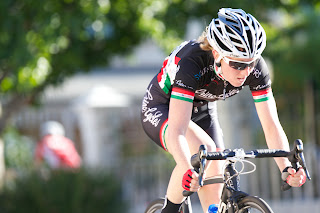Interior architectural photography, for architects, designers, real estate etc presents some challenges for the photographer. As in all photography, control and quality of light is paramount. Lots of time and money has been invested by designers, architects and builders in the use and effect of windows and lighting. As a photographer it is our job to represent those aspects to the best of our ability.
In the old days, this was accomplished with the use of elaborate lighting setups. Firstly tungsten, then leading up to the powerful and portable flash arrangements we use still today. With the advent of digital photography, it became easier to modify images after having taken the. This paved the way for the development of HDR (High Dynamic Range) photography. This allowed the combining of images to be blended together to show the full dynamic range (from full shadow to full highlight) in the one image. In the beginning this led to very surreal effects that bore little resemblance to actuality. Today, very advanced software allows for the use of this technique to be much more realistic.
Why HDR?
So why would you use this HDR technique to photograph interiors In my work, the primary reason is because it allows me to produce an image which is as close to the actual scene. By this I mean all the lighting, both natural and electrical, is shown as it is in reality. Whilst this could be done with using flashes, either large or Speedlite setups, this method is more reproducible and much more cost effective to me, and to the client. Also it removes the possibility of mistake leaving harsh shadows, colour casts and other issues that can arise with the use of flashes.
Technique
the basic technique of HDR photography is to take a series of bracketed shots and put them together using software. My workflow for this is:
- Camera is fixed to tripod with remote release cord attached.
- Camera is levelled using electronic level on screen.
- Scene is metered for middle exposure of room. This is in AV mode @ 100ISO using shutter speed to achieve correct exposure with a fixed aperture.
- Using the Auto-bracket function, I set this to either +/- 2 or 3 stops. This depends on how much difference there is between the brightest and darkest part of the image.
- I usually take a series of 3 or 5 shots depending on the scene.
- Import the images into Aperture after storage on HD.
Software
I have used Photomatix in the past, but over the last couple of years I have been using HDR Efex by Nik Software. I have found this to be much more user friendly and also more subtle in its method effects and tone processing.
Once the 3 images are selected and imported into HDR Efex, you are presented with the following workspace:
This shows the imported image in the centre, with various built in presets down the left. To the right are the tools used to modify the image. This has settings for normal image control like contrast, exposure etc. and also tone compression and HDR method controls.
The default setting that is applied to the image when the window opens is remarkably effective as-is. Most of the presets are not much use for my needs as there effect is too extreme and therefore too obvious. You can also save your own preset once you have a series of settings you are happy with.
The first thing I usually do is adjust the sliders to achieve the correct exposure, contrast and saturation for the room. White balance is adjusted if needed once the blended image is back in Aperture. This will usually result in the windows being blown out and over exposed, in this case due to the time of the day, the windows were not so bright so just needed darkening a little. This is achieved through the use of 'Control Points' accessed through the panel on the right:
Once you click on the 'Add Control Point' button you can click on the image and add one. What this does is allow you to selectively control parts of the picture in terms of exposure, contrast, saturation etc., as can be seen here on the right hand window:
So by lowering the exposure and playing with the other setting, you can drop the relative luminance of the brighter areas. What I have found is using many control points with smaller changes to each produces the most accurate result. As with all HDR work, it is a matter of trila and error to obtain the best settings for each particular occasion.
A handy feature is you are able to show a masking images that shows exactly where the control points are affecting:
So by using the control points to modify the parts of the image you want, the control over the image is remarkable. You can easily achieve a realistic and accurate looking image in very little time:
In this case this is a subtle change but this technique works in almost all situations.
Once you are happy with the image, just click on 'Save' and a tiff of the modified image is saved and, in the case of Aperture, opened there. this can be further worked on there if needed. Sometimes it may need to be run through a noise reduction software (I use NoiseNinja) but if all exposures have been taken at 100ISO then it usually is fine unless the images is going to be displayed at a very large size.
The End
I hope this helps people interested in HDR for interiors. HDR has been given a bad name by some people for various reasons, mostly because of the surreal effect it can bring. As I have shown taking the correct bracket shots and subtle use of software tools provides extremely good results. If anyone would like more information on this, please let me know.




















































